Development and role of air defense missile systems in the air defense system. Part 2
In the first half of the 70-x in the United States began the gradual elimination of positions previously deployed air defense system. This was primarily due to the fact that the main means of delivery of Soviet nuclear weapons have become an ICBM, protection from which the missile defense could not serve. Experiments on the use of the Nike-Hercules upgraded MIM-14 SAM system showed that the SAM system of this complex, despite the 30 km altitude reach and the use of a nuclear warhead, does not effectively intercept ICBM warheads.
By 1974, all Nike-Hercules, except for batteries in Florida and Alaska, were removed from combat duty in the United States. Thus ended story US centralized air defense, relying on the air defense system.
Subsequently, from the beginning of 70 to the present day, the main tasks of the air defense of North America were solved with the help of fighter-interceptors (US Air Defense).
But this did not mean that in the United States there was no work to create a promising air defense system. Long-range and high-altitude "Nike-Hercules" had significant limitations on mobility, in addition, he could not fight low-altitude targets, the minimum height of the MIM-14 Nike-Hercules SAM was 1,5 km.
At the beginning of the 60-x, a very successful medium-range air defense system, MIM-23 HAWK, was put into service by the air defense units of the ground forces and the US Marine Corps.SAM MIM-23 HAWK. Half a century in service). Despite the fact that in the American territory this complex was practically not involved in combat duty, it became widespread in the armies of the US allies.
The good qualities of the Hock air defense system were: good mobility, relative simplicity and low cost (compared to Nike-Hercules). The complex was quite effective against low-altitude targets. For targeting missiles at the target used semi-active radar guidance, which was a great achievement for that time.
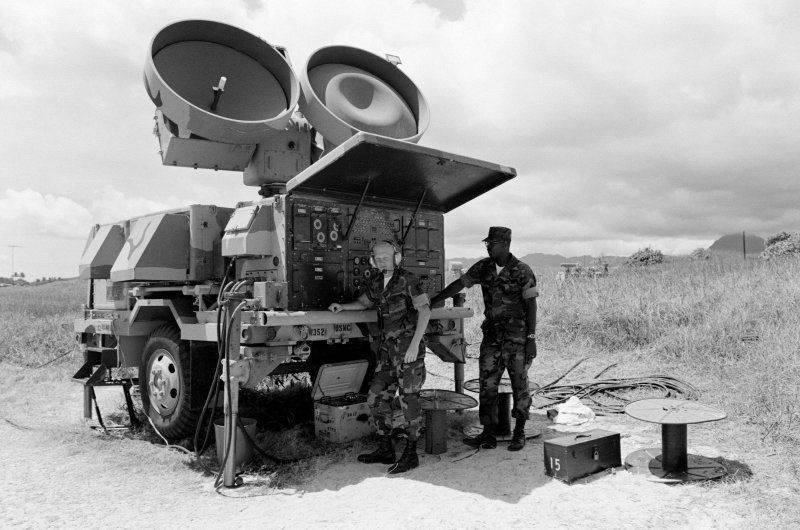
Soon after adopting the first option, the question arose of increasing the capabilities and reliability of the air defense system. The first improved HAWK anti-aircraft missile systems (Advanced Hawk) were sent to the troops in the 1972 year, some of the complexes were mounted on self-propelled chassis.
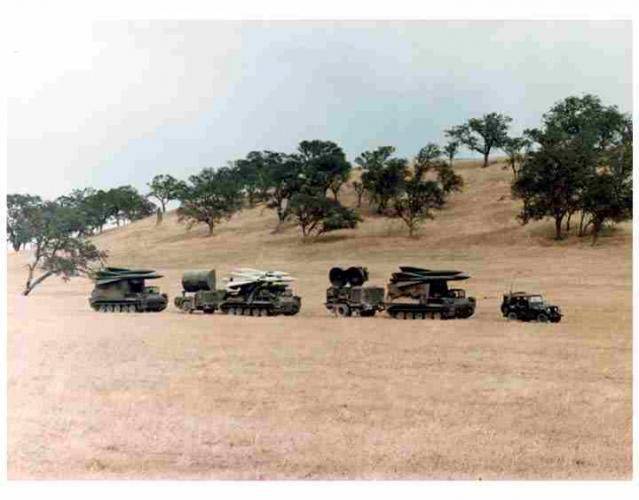
The basis of the modernized Hok air defense missile system was the MIM-23B missile. She received updated electronic equipment and a new solid-fuel engine. The design of the rocket and, as a result, the dimensions remained the same, but the starting mass increased. Having burdened up to 625 kilograms, the upgraded rocket expanded its capabilities. Now the interception range ranged from 1 to 40 kilometers, height - from 30 meters to 18 km. The new solid-fuel engine provided the MIM-23B rocket with a maximum speed of up to 900 m / s.
MIM-23 HAWK anti-aircraft missile systems were shipped to 25 countries in Europe, the Middle East, Asia and Africa. In total, several hundreds of air defense missile systems and about 40 thousand missiles of several modifications were manufactured. This type of air defense system was actively used during combat operations in the Middle East and North Africa.
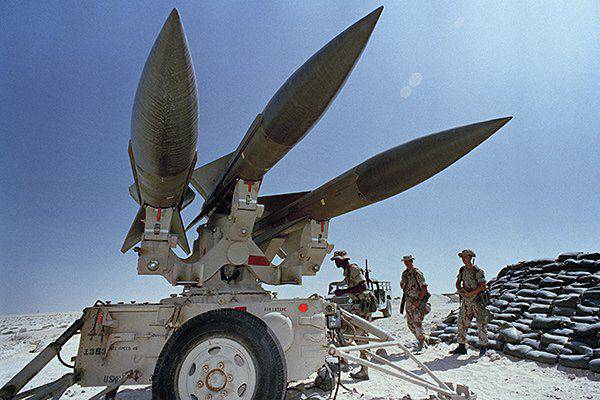
The MIM-23 HAWK complex showed an example of rare longevity. Thus, the US Marine Corps was the last in the American armed forces to completely stop using all the systems of the MIM-23 family only at the beginning of the two thousandth years (its approximate analog is the low-altitude C-125, which was operated in the air defense of the Russian Federation until the middle of 90's). And in a number of countries, having undergone several upgrades, it is still in combat duty, being in service for half a century. Despite their age, the MIM-23 family air defense systems still remain one of the most common anti-aircraft systems of their class.
In the UK at the beginning of the 60-x, the Bloodhound air defense missile system was adopted. According to its characteristics, the maximum range and height of defeat corresponded to the American Hawk, but, unlike it, was more cumbersome and could not be effectively used for intensively maneuvering targets. Even at the design stage of missiles, it was understood that the Soviet long-range bombers would be the main targets for it.
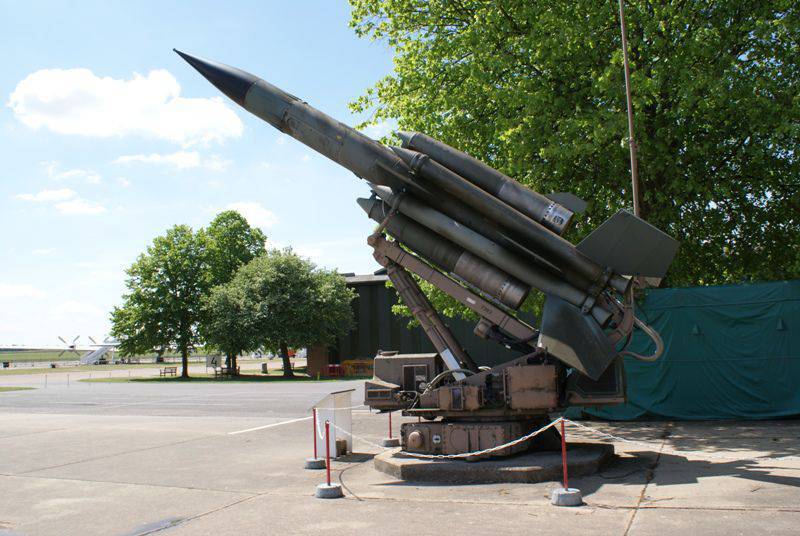
Two propulsive jet engines (ramjet engines) were used as the propulsion system for the Bloodhound missile. The engines were installed above and below the rocket fuselage, which significantly increased the drag. Since direct-flow engines could work efficiently only at speeds from the 1M, four solid-fuel boosters were used to launch the missile system, arranged in pairs on the side surfaces of the rocket. Accelerators accelerated the rocket to the speed at which direct-flow engines began to work, after which they were dropped. The rocket was controlled using a semi-active radar guidance system.
Initially, all the Bloodhound SAMs were deployed in the vicinity of British military air bases. But after the appearance of the radically improved Bloodhound Mk II missile with a range of up to 1965 km in 85, they were used to support the air defense of the British Rhine Army in Germany. The combat service of the Bloodhounds at home lasted until 1990. In addition to Great Britain, they carried combat duty in Singapore, Australia and Sweden. The longest “Bloodhounds” remained precisely at the Swedish service - the last missiles were written off in the 1999 year, almost 40 years later after being put into service.
The first S-25 and S-75 anti-aircraft missile systems developed in the USSR successfully solved the main task posed during their creation - to ensure the defeat of high-speed high-altitude targets, inaccessible to anti-aircraft artillery and difficult to intercept fighter aviation. At the same time, in the range conditions, such high efficiency of the use of new weapons was achieved that the customers had a well-founded desire to ensure the possibility of their use in the entire range of speeds and altitudes at which the aircraft of a possible enemy could operate. Meanwhile, the minimum height of the damage zones of the S-25 and S-75 complexes was 1-3 km, which corresponded to the tactical and technical requirements formed in the early fifties. The results of the analysis of the possible course of the forthcoming military operations indicated that, as the defense becomes saturated with these anti-aircraft missile systems, attack aircraft can proceed to operations at low altitudes (which subsequently happened).
In order to accelerate work in the formation of the technical appearance of the new Soviet low-altitude air defense system, experience in the development of previously created systems was widely used. To determine the position of the target aircraft and the radio-controlled rocket, a differential method with linear scanning of the airspace was used, similarly implemented in the C-25 and C-75 complexes.
Adoption of the new Soviet complex received the designation C-125 (Low-altitude C-125) almost coincided with the American MIM-23 HAWK. But, in contrast to the air defense system previously created in the USSR, the rocket for the new complex was initially designed with a solid-fuel engine. This made it possible to significantly simplify and simplify the operation and maintenance of missiles. In addition, compared with the C-75, the mobility of the complex was increased and the number of missiles on PU was increased to two.
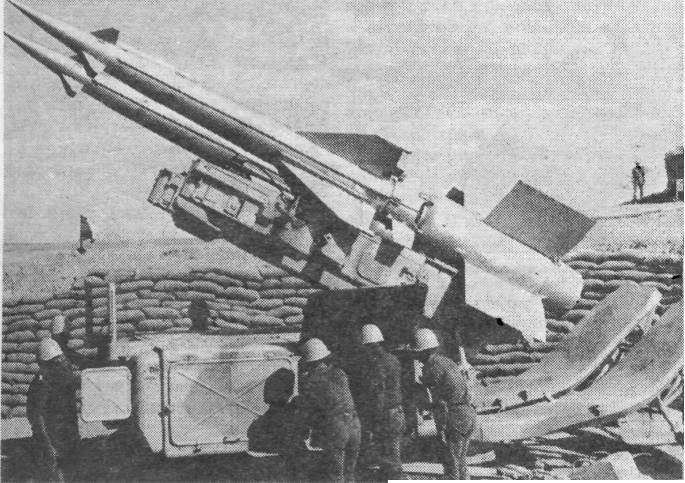
All the equipment of the air defense missile system is located in towed car trailers and semi-trailers, which ensured the placement of the division on the site with dimensions of 200х200 m.
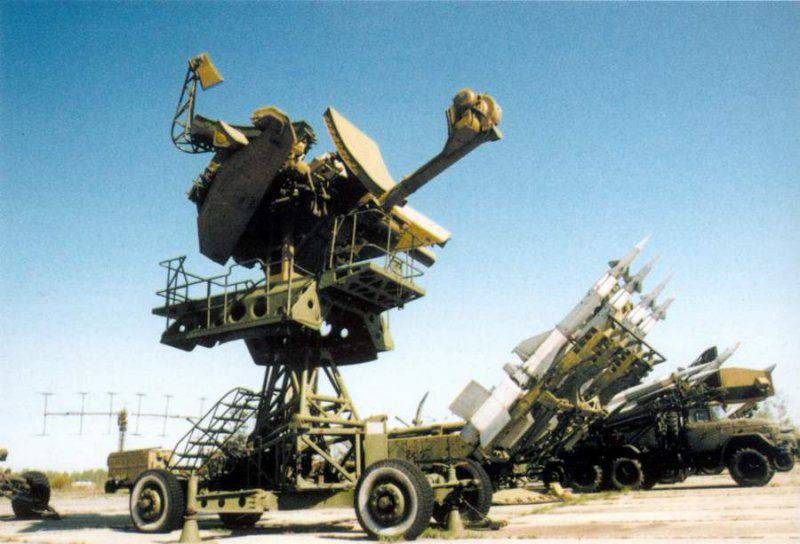
Shortly after the C-125 was put into service, modernization work began, an improved version of the air defense system was named C-125 “Neva-M”. The new missile defense system ensured the defeat of targets operating at flight speeds up to 560 m / s (up to 2000 km / h) at a distance of up to 17 km in the altitude range 200-14000 m. In passive interference of a given density, the maximum height of the lesion decreased to 8000 m, and the range - up to 13,6 km. Low-altitude (100-200 m) targets and near-sonic airplanes were destroyed at a distance of up to 10 km and 22 km, respectively. Thanks to the new launcher, the four-rocket ammunition of the fire division, which is ready for use, has doubled.
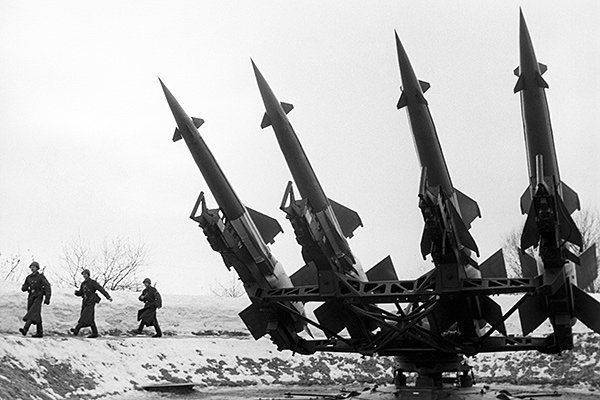
С-125М1 СРК (С-125М1А) “Neva-М1” was created by further modernization of С-125М СРК, conducted at the beginning of 1970-х. He had an increased noise immunity of the ZS control channels and target sighting, as well as the possibility of its tracking and firing in the conditions of visual visibility due to the television-optical sight equipment. The introduction of the new rocket and the refinement of the equipment of the SNR-125 missile guidance station made it possible to increase the hit area to 25 km with reachability over the 18 km altitude. The minimum height of the target hit was 25 m. At the same time, a modification of the missile with a special warhead was developed to defeat group targets.
Various modifications of the C-125 ADMS were actively exported (more than 400 complexes were delivered to foreign customers) where they were successfully used in numerous armed conflicts. According to many domestic and foreign experts, this low-altitude air defense system in its reliability is one of the best examples of air defense systems. For several decades of its operation to date, a significant part of them have not exhausted their resources and can be in service until the 20-30-s. XXI century. According to the experience of combat use and practical firing, the C-125 has high operational reliability and maintainability.
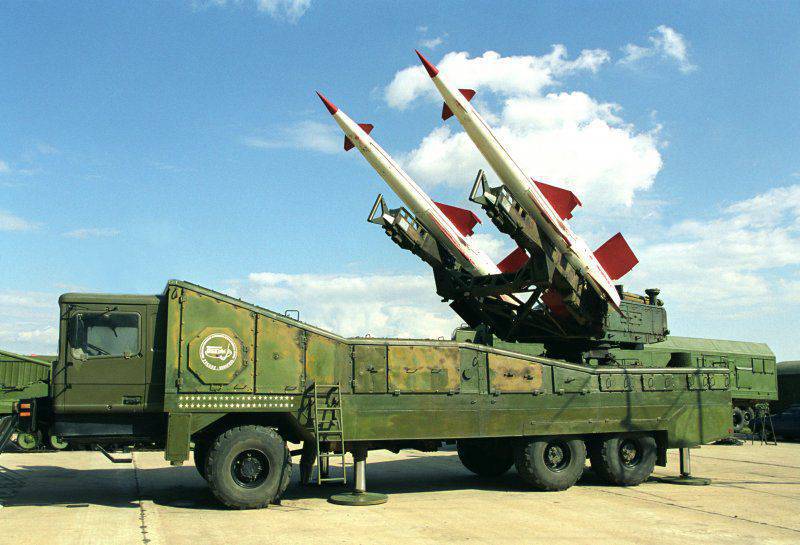
Using modern technology, it is possible to significantly enhance its combat capabilities at relatively low costs compared to the purchase of new air defense systems with comparable characteristics. Therefore, taking into account the great interest on the part of potential customers, in recent years a number of domestic and foreign options for upgrading the C-125 air defense system have been proposed.
The experience gained in exploiting the first anti-aircraft missile systems accumulated by the end of the 50-s showed that they were of little use for fighting low-flying targets. In this regard, in a number of countries have begun to develop compact low-altitude air defense systems, designed to cover both stationary and mobile objects. The requirements for them in different armies were similar in many respects, but, first of all, it was thought that air defense systems should be extremely automated and compact, placed on no more than two high-traffic vehicles (otherwise their deployment time would be unacceptably long) .
In the second half of 60, the beginning of 70, in the USSR, there was an "explosive" growth in the types of air defense missiles and the number of complexes supplied to the troops. First of all, this refers to the newly created mobile air defense systems of the ground forces. The Soviet military leadership did not want to repeat the 1941 of the year, when a significant part of the fighters was destroyed by a sudden strike at the leading airfields. As a result, troops on the march and in areas of concentration were vulnerable to enemy bombers. To prevent such a situation, the development of mobile air defense systems of the front, army, divisional and regimental level was launched.
With sufficiently high combat characteristics, the S-75 family air defense systems were not very suitable for providing air defense tank and motorized rifle units. It became necessary to create a military air defense system on a tracked chassis, which has mobility no worse than the maneuverability of the combined arms (tank) formations and units covered by it. It was also decided to abandon a rocket with a liquid-propellant engine using aggressive and toxic components.
After working out several options for a medium-range mobile air defense system, a rocket weighing about 2,5 t, with a liquid-fuel ramjet engine, with a flight speed of up to 1000 m / s, was created. In it, 270 kg of kerosene was refueled. The launch was carried out by four first-stage launching solid-fuel accelerators. The rocket has a proximity fuze, a radio control command receiver and an onboard transponder.
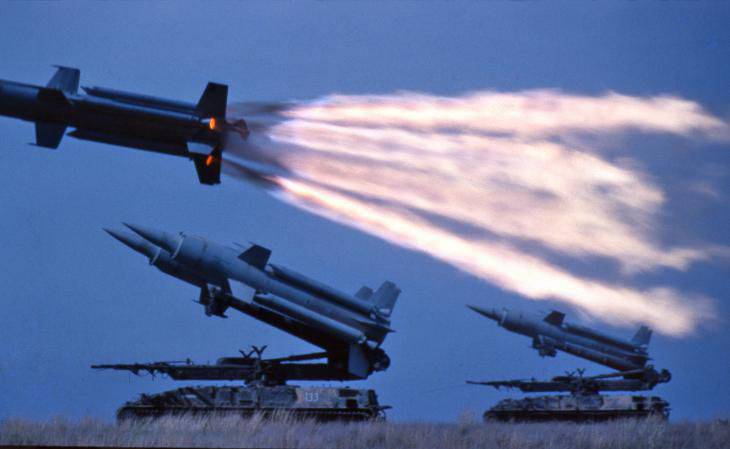
In parallel with the creation of anti-aircraft guided missiles developed launcher and radar stations for various purposes. A missile was aimed at a target with the help of radio commands using the half-straightening method of missiles received from the guidance station.
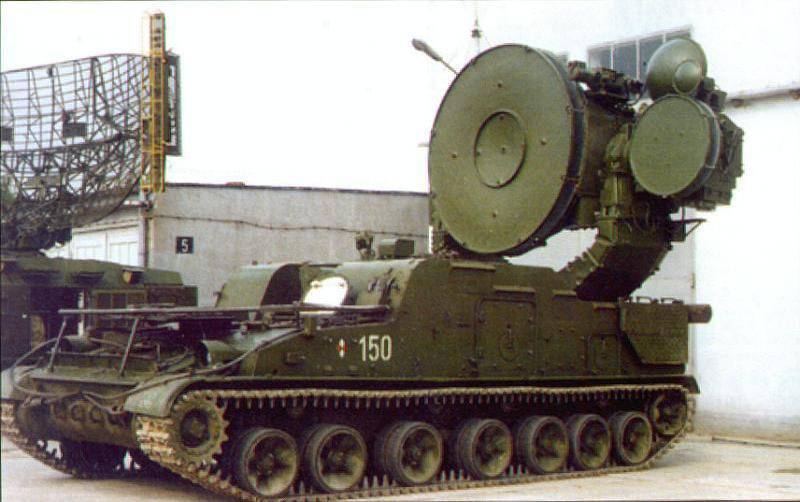
In 1965, the complex entered service and later was repeatedly upgraded. LAW "Circle" (Self-propelled SAM "Circle") ensured the destruction of enemy aircraft flying at speeds of less than 700 m / s at a distance from 11 to 45 kilometers and at an altitude from 3 to 23,5 kilometers. This is the first military air defense missile system in service with the ZRBD SV as a means of an army or front-line unit. In the 1967 year, the Krug-A air defense system reduced the lower limit of the affected area from 3 km to 250 m, and the near limit decreased from 11 to 9 km. After upgrading the missile defense system in 1971, the new “Krug-M” air defense system extended the frontier of the affected area from 45 to 50 km, and the upper limit increased from 23,5 to 24,5 km. The Krug-МХNUMX air defense system was adopted in 1 year.
The production of the Krug air defense system was carried out before the adoption of the C-300В air defense missile system. Unlike the C-75 air defense system, with which the Krug has a close defeat zone, deliveries were made only to the Warsaw Pact countries. Currently, complexes of this type are almost universally written off due to the development of a resource. From the CIS countries, the Krug air defense system was operated the longest in Armenia and Azerbaijan.
In 1967, the self-propelled SAM "Cube" entered into service (Divisional self-propelled anti-aircraft missile system "Cube") designed to provide air defense of tank and motorized rifle divisions of the Soviet Army. The division included an anti-aircraft missile regiment armed with five Kub air defense systems.
For combat means of the Kub C anti-aircraft missile system, in contrast to the Krug air-defense missile system, lighter tracked chassis were used, similar to those used for the Shilka anti-aircraft guns. At the same time, radio equipment was installed on one and not on two chassis, as in the Krug complex. Self-propelled launcher - carried three missiles, not two as in the complex "Circle".
The SAM was equipped with a semi-active radar GPS located in the front of the rocket. Capture of the target occurred from the start, tracking it at the Doppler frequency in accordance with the speed of approach of the missile and the target generating control signals for aiming the anti-aircraft guided missile at the target. To protect the homing head from intentional interference, the latent frequency of the target search and the possibility of homing at interference in the amplitude mode of operation were also used.
The rocket was used combined direct-flow propulsion system. In front of the rocket there was a gas generator chamber and the engine charge of the second (March) stage. Fuel consumption in accordance with the flight conditions for the solid-fuel gas generator was impossible to regulate, so a conventional type trajectory was used to select the form of charge, which in those years was considered by the developers to be the most likely during combat use of the rocket. The nominal duration of operation is slightly more than 20 seconds, the mass of the fuel charge is about 67 kg with a length of 760 mm.
The use of ramjet engine ensured maintaining high-speed missiles at the entire flight trajectory, which contributed to high maneuverability. The missile provided for the defeat of a target that maneuvers with overloading to 8 units, however, this reduced the probability of hitting such a target, depending on various conditions up to 0,2-0,55. At the same time, the probability of hitting a non-maneuvering target was 0,4-0,75. The range of destruction in range was - 6-8 ... 22 km, in height - 0,1 ... 12 km.
The “Kub” air defense system was repeatedly upgraded and was in production until 1983. During this time around 600 complexes were built. The Kub anti-aircraft missile system through foreign economic channels under the code Kvadrat was shipped to the 25 countries' armed forces (Algeria, Angola, Bulgaria, Cuba, Czechoslovakia, Egypt, Ethiopia, Guinea, Hungary, India, Kuwait, Libya, Mozambique, Poland, Romania, Yemen, Syria, Tanzania, Vietnam, Somalia, Yugoslavia and others).
Complex "Cube" has been successfully used in many military conflicts. Especially impressive was the use of the missile system in the Arab-Israeli war 1973, when the Israeli Air Force suffered very significant losses. The effectiveness of the Kvadrat SAM system was determined by the following factors:
- high noise immunity of complexes with semi-active homing;
- the lack of Israeli means of electronic countermeasures, and notifications about the irradiation of the radar illumination working in the required frequency range - the equipment supplied by the United States, was designed to combat radio command radar C-125 and C-75;
- high probability of hitting a target with a maneuverable anti-aircraft guided missile with a ramjet engine.
Israeli aviation, without having the means to suppress the Kvadrat complexes, was forced to use very risky tactics. Repeated entry into the launch zone and the subsequent hasty exit from it caused a rapid expenditure of the ammunition complex, after which the weapons of the disarmed missile complex were further destroyed. In addition, the approach of fighter-bombers at a height close to their practical ceiling was used, and a further dive into the crater of the "dead zone" above the anti-aircraft complex.
The Kvadrat SAM system was also used in 1981-1982 during the fighting in Lebanon, during the conflicts between Egypt and Libya, on the Algerian-Moroccan border, in 1986 during the reflection of American raids on Libya, in 1986-1987 in Chad, in 1999 year in Yugoslavia. Until now, the Kvadrat anti-aircraft missile system in many countries of the world is in service. The combat effectiveness of the complex can be increased without significant structural improvements by using in it elements of the Buk complex.
At the beginning of the 60-x in the USSR, work began on the creation of a portable anti-aircraft missile system (MANPADS) - Strela-2, which should be used by one anti-aircraft gunner and used in the air defense battalion unit. However, due to the fact that there were reasonable concerns that it would not be possible to create a compact MANPADS in a short time, in order to secure it was decided to create a portable air defense system with not so rigid mass-dimensional characteristics. At the same time, it was planned to increase the mass from 15 kg to 25 kg, as well as the diameter and length of the rocket, which made it possible to slightly increase the range and reach in height.
In April, 1968, the new complex under the name "Strela-1" entered service ( Regimental self-propelled anti-aircraft missile system "Strela-1"). As a base for the Strela-1 self-propelled anti-aircraft missile system, an armored reconnaissance patrol vehicle BRDM-2 was used.
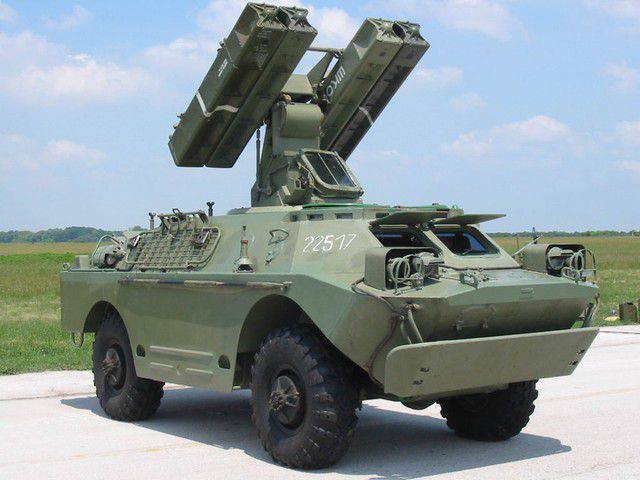
The combat vehicle of the Strela-1 complex was equipped with a PU with 4 anti-aircraft guided missiles placed on it, placed in transport-launch containers, optical means of aiming and detecting, missile launch equipment and communications equipment. To reduce the cost and increase the reliability of the combat vehicle, the PU was aimed at the target due to the muscular efforts of the operator.
In the missile complex complex was implemented aerodynamic scheme "duck". The missile was aimed at a target using a photo-contrast homing head using the proportional navigation method. The rocket was completed with contact and non-contact fuses. The fire was fought on the principle of "shot and forget."
The complex could fire at helicopters and airplanes flying at altitudes of 50-3000 meters at speeds up to 220 m / s at the catch-up course and up to 310 m / s at the head-on course at exchange rate settings of up to 3 thousand meters, as well as at suspended helicopters. Opportunities of a photocontrast homing head allowed firing only at visually visible targets that were on a background of overcast or clear sky, at angles between directions to the sun and at a target of more than 20 degrees and with an angular elevation of the line of sight of the target over the visible horizon of more than 2 degrees. The dependence on the background, weather conditions and illumination of the target was limited by the combat use of the Strela-1 anti-aircraft complex. The average estimates of this dependence, taking into account the capabilities of the enemy aviation, and later on the practical use of the air defense system at the exercises and during military conflicts showed that the Strela-1 complex could be used quite effectively. The probability of hitting targets moving at a speed of 200 m / s when shooting in pursuit ranged from 0,52 to 0,65, and at a speed of 300 m / s - from 0,47 to 0,49.
In 1970, the complex was upgraded. In the modernized version of the "Arrow-1M" increased the likelihood and target area. The structure of the air defense system introduced a passive direction finder, which provided target detection with the included airborne radio, its tracking and input into the field of view of the optical reticle. The possibility of targeting information from an anti-aircraft missile system equipped with a passive direction finder to other Strela-1 systems of a simplified configuration (without a direction finder) was also provided for.
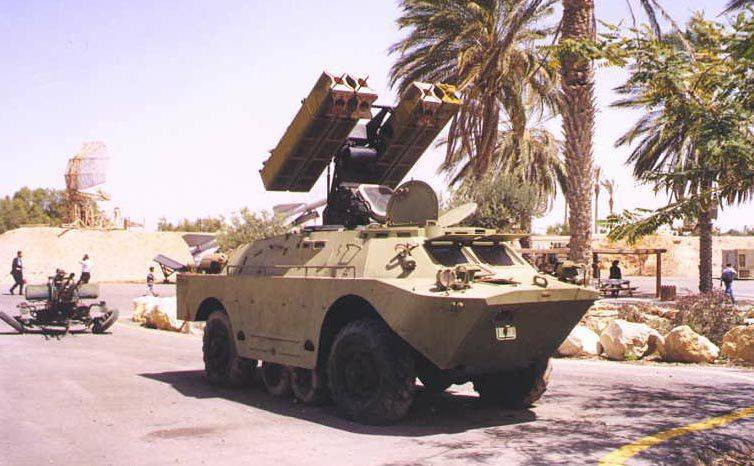
The Strela-1 / Strela-1М SAM system as part of a platoon (4 combat vehicles) was part of an anti-aircraft missile-artillery battery (Shilka-Strela-1) of a tank (motorized) regiment. The air defense system was delivered to Yugoslavia, to the Warsaw Pact member countries, to Asia, Africa and Latin America. The complexes have repeatedly confirmed the simplicity of their operation and a sufficiently high efficiency during shooting practice and military conflicts.
The ambitious program for creating the mobile MIM-46 Mauler SAM system that was undertaken in the same time period in the United States failed. According to the initial requirements, the Mauler air defense missile system was a combat vehicle based on the M-113 armored personnel carrier with a package of 12 SAMs with a semi-active guidance system and radar targeting and target illumination.
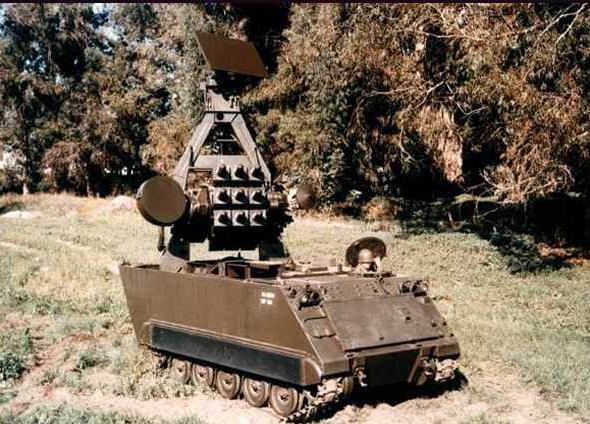
It was assumed that the total mass of the air defense system will be about 11 t, which will provide the possibility of its transportation on airplanes and helicopters. However, already at the initial stages of development and testing, it became clear that the initial requirements for the "Mauler" were put forward with excessive optimism. So, a single-stage rocket created for it with a semi-active radar homing head with a launch mass of 50 - 55 kg should have an operating range of up to 15 km and reach speeds of up to 890 m / s, which turned out to be absolutely unreal for those years. As a result, in the 1965 year, after 200 million dollars was spent, the program was closed.
As a temporary alternative, it was proposed to install an AIM-9 Sidewinder air-to-air guided missile (SD) on the ground chassis. The MIM-72A Chaparral SAM missiles practically did not differ from the AIM-9D Sidewinder missiles, on the basis of which they were developed. The main difference was that the stabilizing rollers were mounted only on two tail stabilizers, the other two were fixed. This was done to reduce the launch weight of a rocket launched from the ground. The “Chaparel” air defense system could fight air targets flying at altitudes of 15-3000 m, at a distance of up to 6000 m.
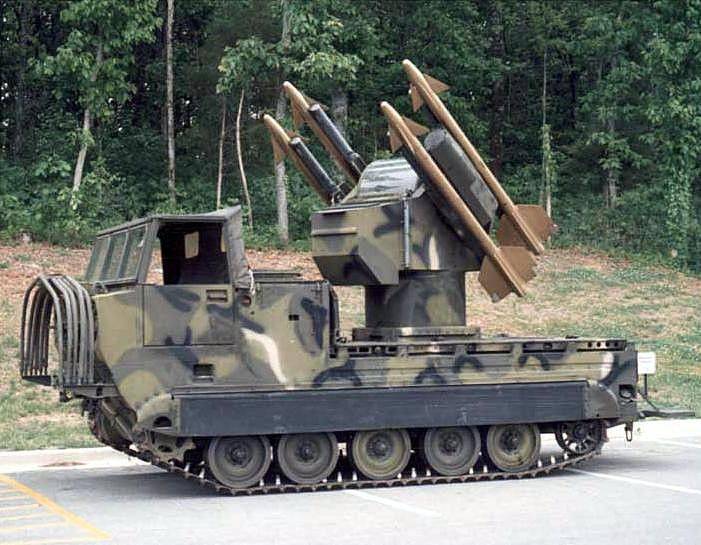
Like the basic "Sidewinder", the MIM-72A rocket was aimed at the infrared radiation of target engines. This made it impossible to shoot on a collision course, and allowed the enemy aircraft to attack only in the tail, which, however, was considered irrelevant to the advanced covering of the complex of troops. The guidance of the system was carried out manually by the operator, visually tracking the target. The operator had to aim the target, while holding the enemy in sight, to activate the GOS of the missiles, and when they capture the target - to carry out a volley. Although it was originally intended to equip the complex with an automated target guidance system, this was eventually abandoned, since the electronics of that time spent too much time developing a firing solution, and this reduced the reaction rate of the complex.
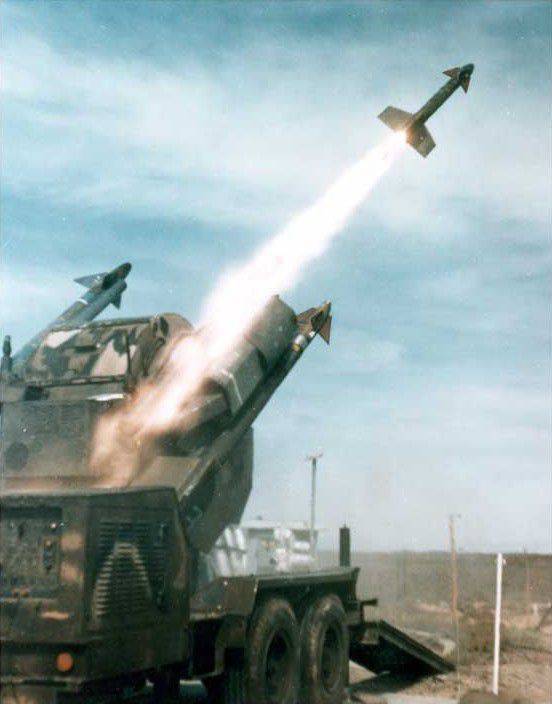
The development of the complex was very fast. All the main elements of the system have already been worked out, so in 1967, the first missiles were put to the test. In May, the 1969 of the year, the first missile battalion equipped with the MIM-72 "Chaparral" was delivered to the troops. The unit was mounted on the M730 tracked carrier chassis.
Subsequently, as the AIM-9 Sidewinder SDs were created and put into service, the ZRK was upgraded, at the end of the 80's, in order to increase noise immunity, some of the early versions of the early-version missiles were equipped with the FIM-92 Stinger homing missile system. Total US Army received about 600 SAM "Chaparel". Finally, this complex was decommissioned in the USA in 1997.
In 60-70-ies, the United States failed to create anything similar to the Soviet mobile air defense systems "Circle" and "Cube". However, the US military for the most part considered the air defense system as an aid in the fight against the Warsaw Pact attack aircraft. It should also be remembered that the territory of the United States, with the exception of a brief period of the Caribbean crisis, was never within the coverage area of Soviet tactical aviation, while the territory of the USSR and Eastern Europe was within the reach of tactical and carrier-based aviation of the United States and NATO. This was the strongest motive for the development of the adoption of various anti-aircraft complexes in the USSR.
To be continued ...
Based on:
http://www.army-technology.com
http://rbase.new-factoria.ru
http://geimint.blogspot.ru/
http://www.designation-systems.net/
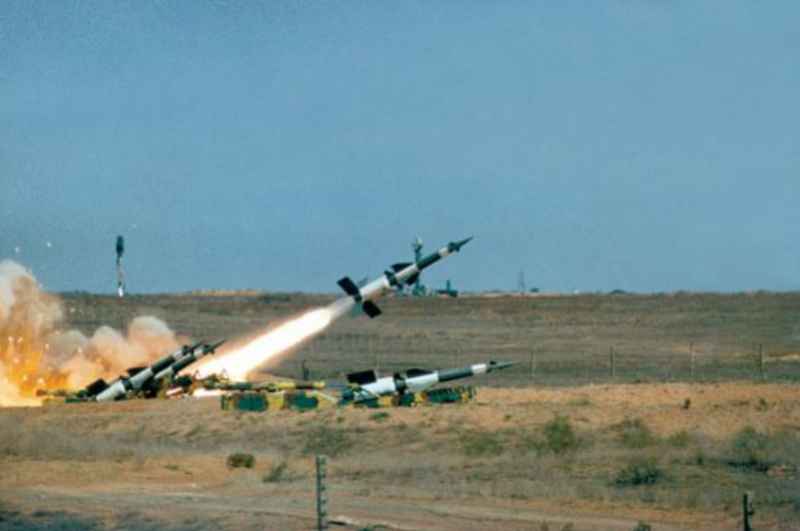
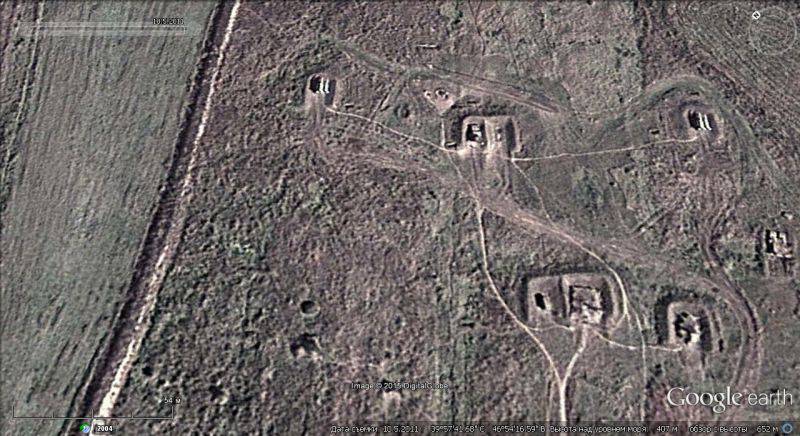
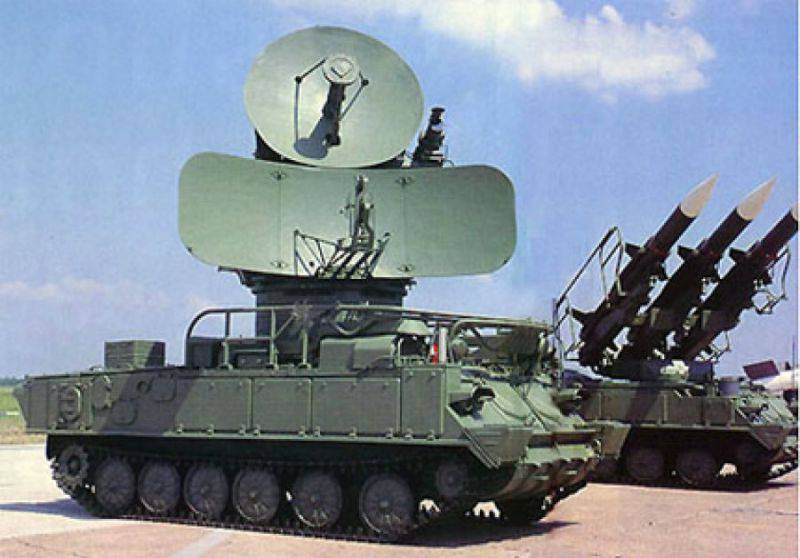
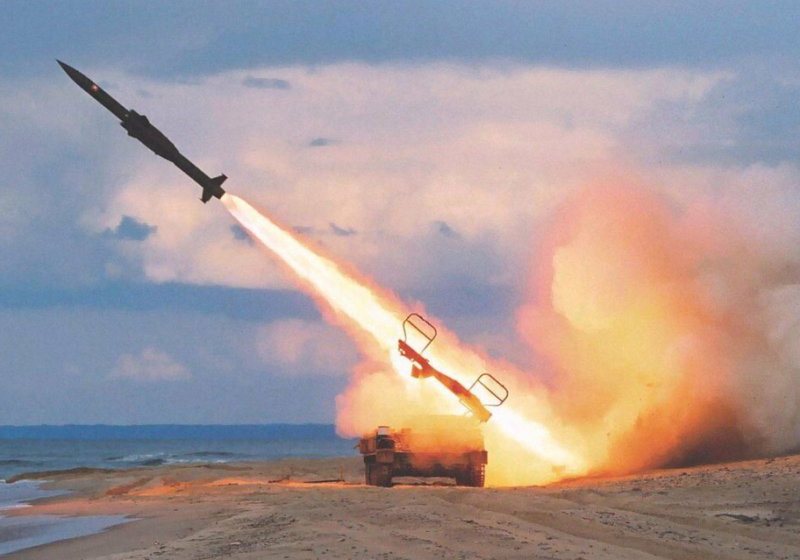
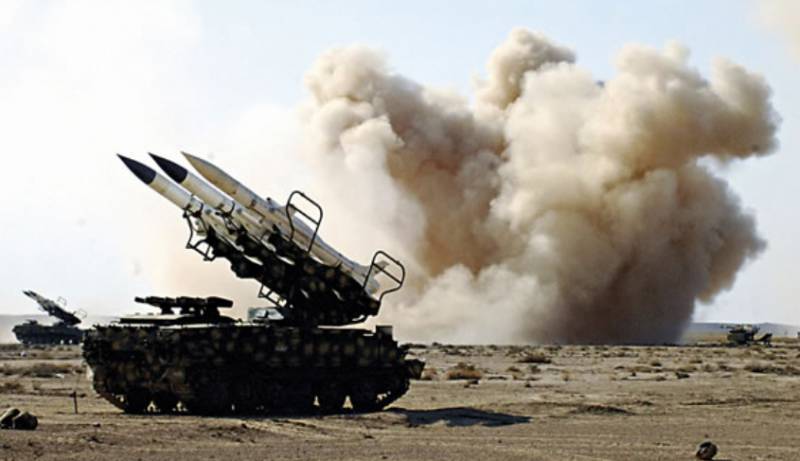
Information